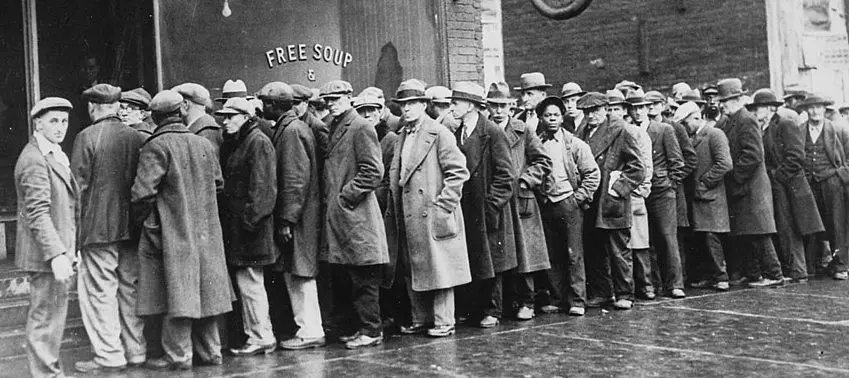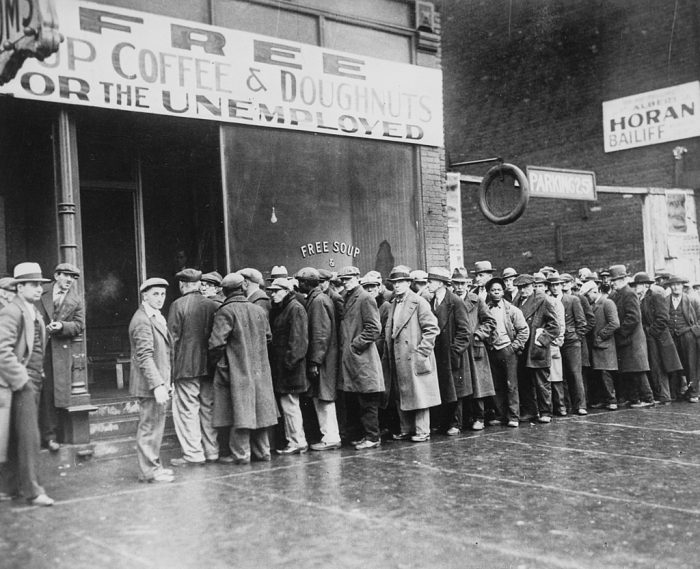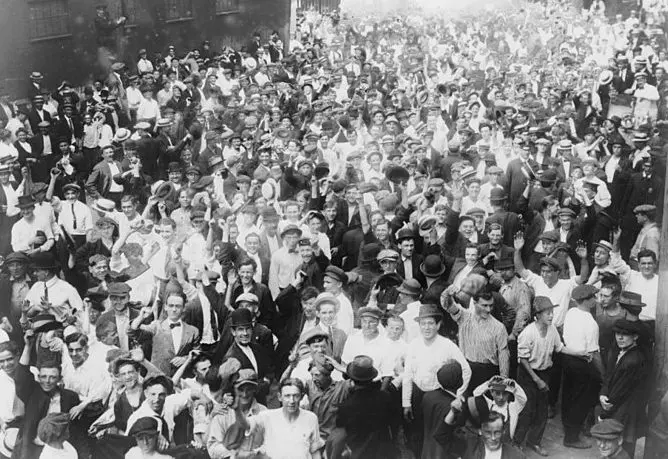
The Supreme Court Misreads History
May 23, 2018
How Epic Systems fails to understand twentieth-century labor history
Genevieve Carlton, Ph.D
For decades, workers have relied on class action lawsuits to protect their rights. A single employee underpaid by a small amount – say, $5,000 – might struggle to recover that money from his employer. However, if that employee realizes that all his coworkers are also victims of wage theft, the group’s total claim could reach into the millions. Individual employees are more likely to recover if they work together.
But on May 21, 2018, the Supreme Court issued a 5-4 ruling undermining the rights of employees to work together if their employer violates the law. The case, argued in Epic Systems Corp. v. Lewis, pits two early twentieth century laws against each other: the Federal Arbitration Act of 1925 and the National Labor Relations Act of 1935. The court’s ruling misreads history – and the history of labor in the 1920s and 1930s holds valuable lessons for our current situation.

Unemployed men flock to a Chicago soup kitchen in 1931, drawn by the promise of “Free Soup Coffee & Doughnuts for the Unemployed.”
First, a quick reminder. In the 1920s, when the Federal Arbitration Act passed Congress and was signed into law by President Coolidge, the economy was booming. It was the Roaring Twenties, and America’s wealth doubled from 1920 to 1929. Of course, the biggest economic event of the twentieth century began in 1929: the Great Depression.
The economic boom of the 1920s didn’t benefit everyone equally. Businesses, wary of the rise of unions and the threat of strikes, began forcing new hires to sign yellow-dog contracts promising they wouldn’t join a union. The coercive practice wasn’t outlawed until 1932, when the nation’s economic situation looked very different.
In the Roaring Twenties, Congress passed the Federal Arbitration Act, originally intended as a system for businesses to settle disputes through arbitration outside of the judicial system. In the last two decades, some have argued the act limits employee rights to file class action lawsuits against their employers. By 2017, the Economic Policy Institute reported that over 60 million Americans work under mandatory arbitration clauses – which can include a “class action waiver.” Ironically, the sponsors of the Federal Arbitration Act promised that it did not cover labor matters. The original goal wasn’t about employment contract arbitration clauses at all, but today, that’s exactly what businesses do under the protection of the act.
The Great Depression shook America’s economy and led to new legislation designed to protect workers. After all, the world looked very different in the 1930s, as the unemployment rate hit a record 25 percent in 1933. The economic devastation swept President Franklin D. Roosevelt into office with his promise of a New Deal for the American people. FDR’s agenda included creating the Social Security Administration to provide a social safety net, and the creation of the National Labor Relations Act.
In 1935, with unemployment still at 20 percent, Congress passed the National Labor Relations Act. The purpose, according to the act itself, was to address “the inequality of bargaining power between employees . . . and employers.” This very inequality, Congress declared, was bad for the economy, because it depressed wages. And the timing is no coincidence: Congress acted during the Great Depression, noting that the inequality between employees and employers “tends to aggravate recurrent business depressions” – an understatement during the middle of the country’s worst depression.
The same law provided unionization protections, arguing that “protection by law of the right of employees to organize and bargain collectively safeguards commerce from injury, impairment, or interruption.”

In 1915, strikers gathered in Bayonne, New Jersey, to protest working conditions.
The NLRA gave employees the right to bargain collectively and join together in class action lawsuits to protect their rights. The act specifically granted employees the right to “self-organize, to form, join, or assist labor organizations, to bargain collectively through representatives of their own choosing, and to engage in other concerted activities for the purpose of collective bargaining or other mutual aid or protection.”
But the recent Supreme Court decision in Epic Systems Corp. v. Lewis severely limits that protection. Instead, the court ruled that the Federal Arbitration Act legalized individual arbitration clauses that force employees to negotiate one-on-one with their employers.
The Epic Systems decision weighed the power of a law created just before the depression and one created in its wake, designed to protect workers. And the majority, led by Neil Gorsuch, discarded the depression-era worker protections.
Businesses can now legally force potential hires to sign away their rights in court as a condition of employment – not so different from the yellow dog contracts that helped create the Great Depression. Justice Ginsburg made that exact point in her dissent. Turning to the labor history of the early twentieth century, Ginsburg concludes, “Employers, in turn, engaged in a variety of tactics to hinder workers’ efforts to act in concert for their mutual benefit.”
After decades of struggle in the early twentieth century, the NLRA argued that the Great Depression itself had its roots in the “inequality of bargaining power.” And today, the Supreme Court is tilting the scales toward businesses. Once again, workers face an employment law system that appears a lot like the 1920s. Looking back at history, that’s not going to end well.
Genevieve Carlton is an award-winning historian with a Ph.D in History from Northwestern University. In 2017, she earned tenure at the University of Louisville. Her work has been published by the University of Chicago Press and in top academic journals.